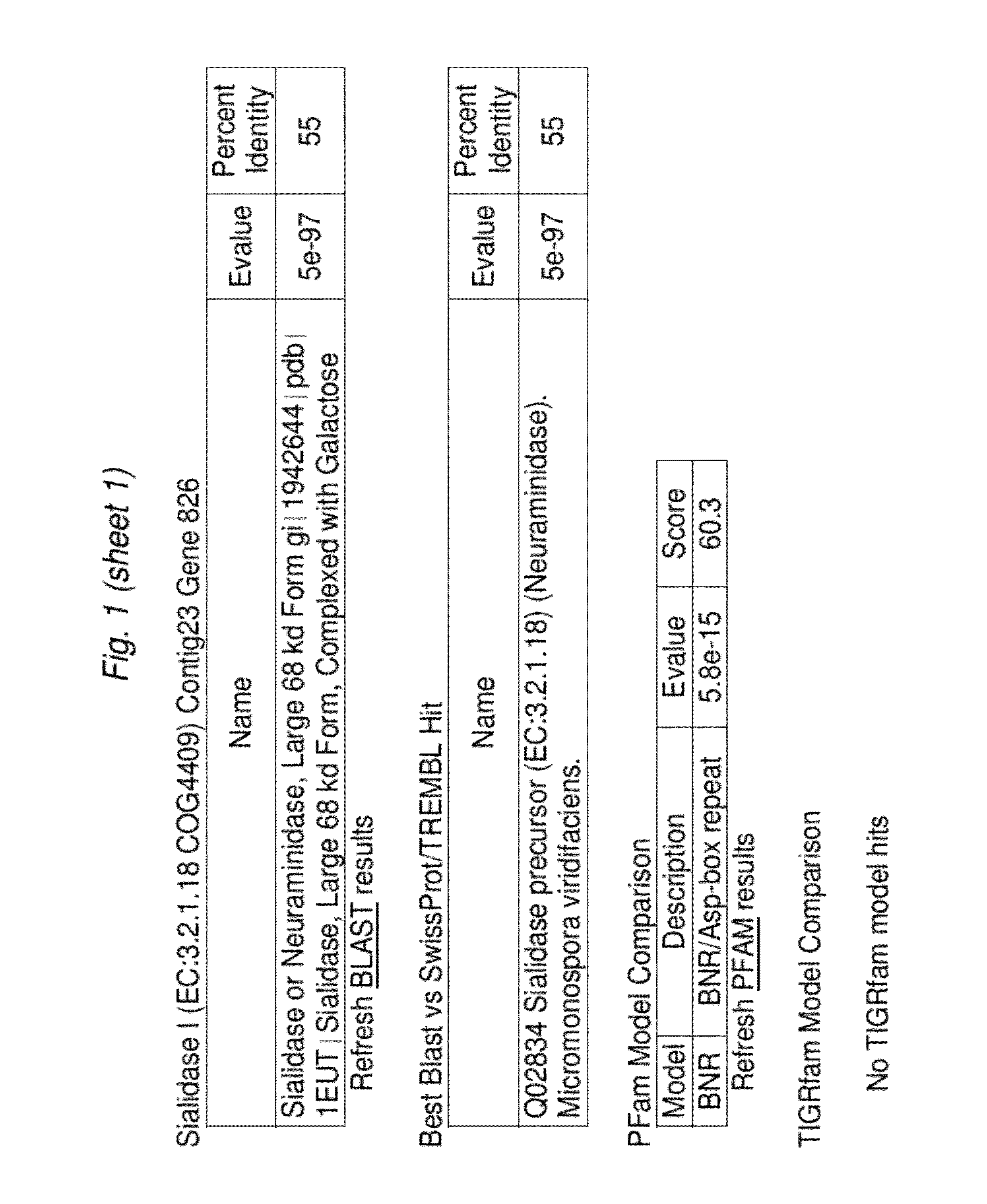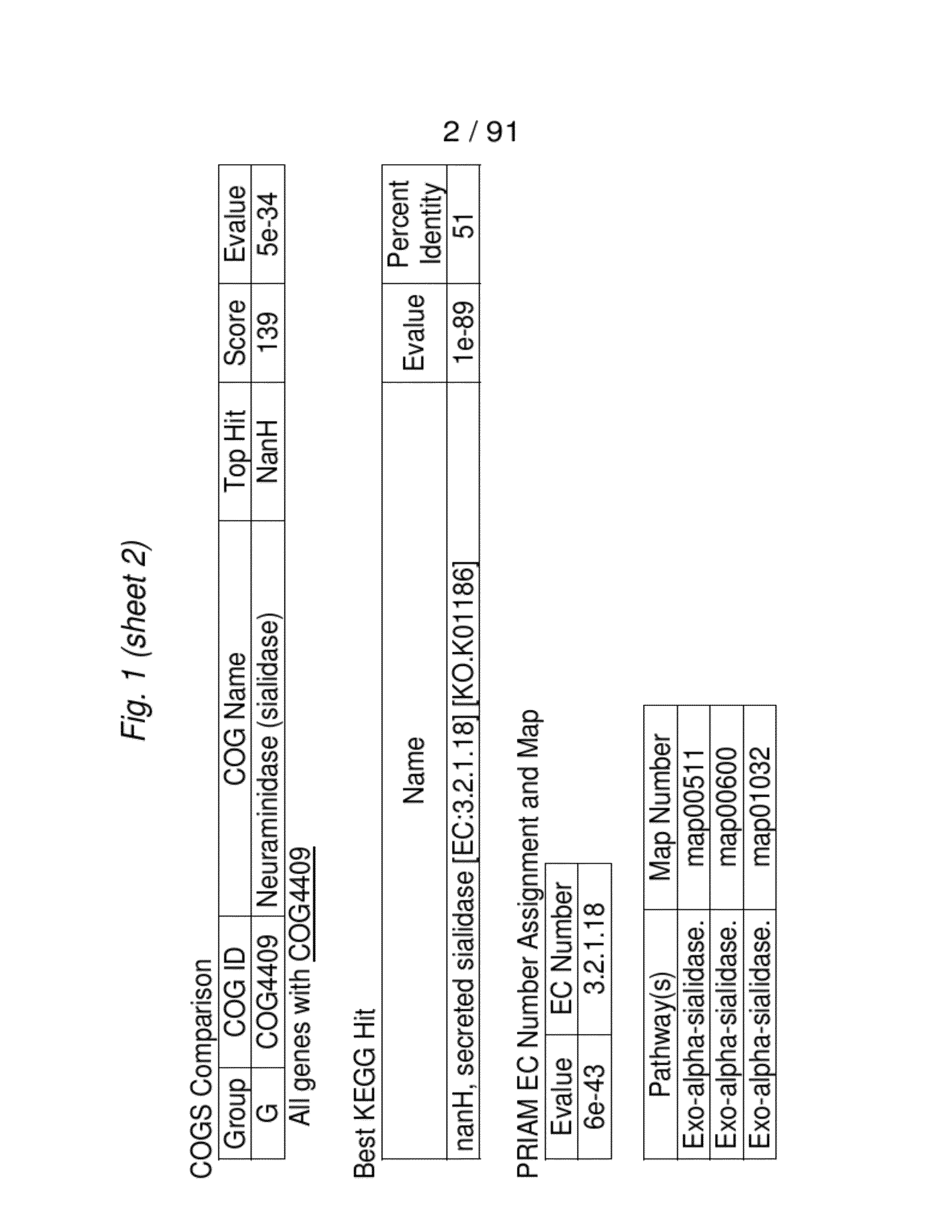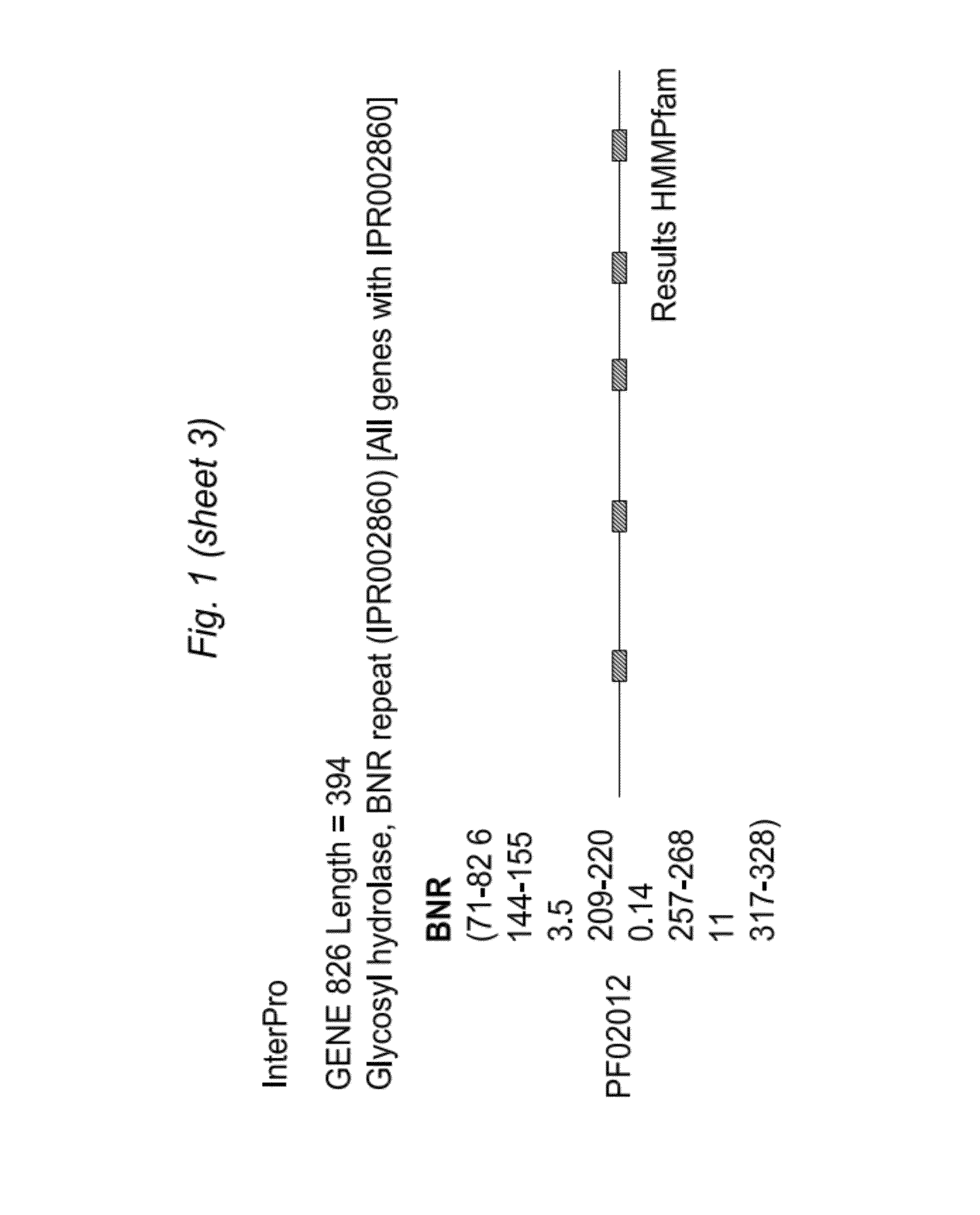Bifidobacterial gene sequences and their use
a technology of bifidobacteria and gene sequences, applied in the field of bifidobacteria gene sequences and their use, can solve the problems of lacking oligosaccharides in cow's milk and commercially available formulas, and achieve the effect of reducing the number of bacterial pathogens
- Summary
- Abstract
- Description
- Claims
- Application Information
AI Technical Summary
Benefits of technology
Problems solved by technology
Method used
Image
Examples
example 1
Identification of Genes Involved with HMO Catabolism
[0090]We received the Bifidobacterium longum bv. infantisUCD272 (ATCC15697) draft genome sequence from the Joint Genome Institute on Apr. 19, 2006 in 78 unannotated contigs. We began the in silico analysis by searching for genes whose presence we had predicted based on human milk oligosaccharide (HMO) utilization and known phenotypic traits exhibited by this strain. Specifically, we aligned previously determined sialidase genes from the phylum Actinobacteria (high G+C Gram-positive) of which Bifidobacteria are a member using the ClustalW program. This alignment yielded a nucleotide consensus sequence which was subsequently used to probe the 78 contigs for similarity utilizing b12seq (NCBI). Contigs 69 and 77 exhibited significant similarity to the consensus sialidase and were segregated for further analysis. Gene models were created for these two contigs by FgenesB (Softberry Inc.) and the EasyGene Server 1.0 (Center for Biological...
example 2
Glycosyl Hydrolase Activities in Strains of Bifidobacteria
[0102]This example describes experiments showing the presence of enzymatic activities corresponding to the nucleic acids and polypeptides of the present invention in strains of Bifidobacteria.
[0103]Methods and Materials
[0104]Glycosyl hydrolase assays. Assayed cells were incubated anaerobically at 37° C. on semi-synthetic MRS medium, with 1% (w / v) sterile filtered lactose or HMOs as the sole carbon source. Early stationary phase cells were harvested, and 200 mg of 0.1 mm diameter glass beads (BioSpec Products, Bartlesville, Okla.) were added to the suspensions which were subjected to two cycles of 45 s at a power of 6.0 m s−1 on a Fast Prep FP120 cell disruptor (Qbiogene, Morgan Irvine, Calif.). The beads and cell debris were removed by centrifugation. Cell-free extracts were collected and kept temporarily on ice until the start of the enzyme assays. Protein concentrations were determined according to the Bradford method usi...
example 3
Expression and Purification of the Proteins of the Invention and Synthesis of Oligosaccharide Mimics
[0108]In order to utilize the genes of the invention, any of SEQ ID NO: 1-22 is cloned into an expression vector downstream of an inducible promoter using methods well known to those of skill in the art, such as the methods described herein. The gene in an appropriate expression vector is overexpressed in a suitable E. coli host. The resulting recombinant protein is extracted and purified using any number of established purification schemes known in the art. Because the purified enzyme is required to be native, the expressed protein is refolded if solubilized from an inclusion body. Characterization of the native protein involves a determination of reaction kinetics, specificity, and other biochemical features on carbohydrate substrate(s). Moreover, the reverse reaction is characterized (i.e., transferase activity) by assaying for enzyme activity in the presence of high molar concentr...
PUM
| Property | Measurement | Unit |
|---|---|---|
| Tm | aaaaa | aaaaa |
| diameter | aaaaa | aaaaa |
| pH | aaaaa | aaaaa |
Abstract
Description
Claims
Application Information
 Login to View More
Login to View More - R&D
- Intellectual Property
- Life Sciences
- Materials
- Tech Scout
- Unparalleled Data Quality
- Higher Quality Content
- 60% Fewer Hallucinations
Browse by: Latest US Patents, China's latest patents, Technical Efficacy Thesaurus, Application Domain, Technology Topic, Popular Technical Reports.
© 2025 PatSnap. All rights reserved.Legal|Privacy policy|Modern Slavery Act Transparency Statement|Sitemap|About US| Contact US: help@patsnap.com



